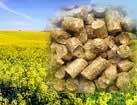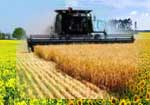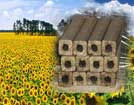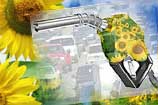






2. Pellets 8mm
3. 6-8 mm DIN+ Quality Pellets
4. We manufacture and sell fuel pellets from straw to European countries
5. Sell wood pellets
6. Wood pellet manufacturing
7. Sunflower Husk Pellets
8. Din Plus Wood Pellets
9. Export of sunflower husk pellets to the European market
10. Export of sunflower husk pellets to the European market
Energy for cities in the future
Mon-13-2016
In the global effort to fight climate change, cities have some of the greatest potential– and the greatest imperative — to make a difference. With an increasing global migration into the world’s urban areas, which are expected to support at least two-thirds of the total human population by 2050, experts have argued that cities have no choice but to transition toward low-carbon systems if they’re going to remain sustainable.
Future energy-saving technologies in cities
Energy will need to be a primary focus of that effort. From the expansion of renewable energy sources to the adoption of cutting-edge energy efficiency and storage technologies, cities have the opportunity to drastically reduce their carbon footprints.
This is the focus of a new paper, published Thursday in the journal Science, that discusses the ways cities can integrate renewable energy, as well as energy-saving technologies, into the urban landscape. This can be a challenge, given that cities — with their closely packed buildings and dense populations — don’t always lend themselves to traditional renewable techniques. It’s not exactly practical to fit an acres-long solar panel array in the middle of Shanghai, for instance, or to place a 200-foot-tall wind turbine in downtown New York City.
But with a little creativity, researchers are developing new ideas and technologies specifically designed for city life. In the new paper, authors Daniel Kammen and Deborah Sunter of the University of California Berkeley have evaluated some of the most promising of these. Here are a few of the innovative solutions that may help cities lead the ongoing fight against climate change and the march toward a low-carbon society.
Solar panels have the most traction in the future
Although many forms of renewable energy may be useful for different cities around the world, solar is likely to have the most traction in the future. “In essentially every setting, solar — even in places that don’t seem as ideal as tropical sunny cities — is arguably the lead,” said Kammen, director of UC Berkeley’s Renewable and Appropriate Energy Laboratory. “And that’s just because there’s now so many ways to deploy solar.”
Traditionally, solar panels have been limited to the roofs of buildings, where there’s space available and they’re likely to get the most sun. But now, researchers have developed transparent solar panels that can actually be mounted on the windows of buildings in order to capture even more sunlight. This design could allow buildings to generate even more of their own power from solar energy in the future.
Additionally, Kammen noted, researchers have developed technology that allows them to “tune” solar cells to take the best advantage of the light that’s available to them. Solar cells in places with lots of direct sunlight can be optimized for shorter wavelengths of radiation, for instance, while cells in places with lots of clouds or scattered light can be tuned to take advantage of longer wavelengths.
Wind energy through tiny urban turbines
Wind energy — which evokes images of tall turbines with immense, rotating blades — may not seem like the most practical renewable resource for densely packed urban areas. But scientists are finding ways to optimize wind turbines for cities as well.
“What we’re seeing now is a whole new generation of small, ultra-light, highly efficient wind turbines that can be built into buildings,” Kammen said. Urban wind turbines have been experimentally introduced in various cities around the world. The World Trade Center in Bahrain, for instance, was the first set of skyscrapers to be built with integrated wind turbines, which can supply up to 15 percent of the building’s electrical energy needs. The Eiffel Tower has been fitted with two turbines.
Kammen and Sunter also point to the Pearl River Tower in Guangzhou, China, which incorporates wind turbines in an innovative design. “The curved glass facade of the building funnels air to the [turbines] at speeds of 1.5 to 2.5 times the ambient wind speed, allowing the turbines to generate 15 times more energy than freestanding wind turbines could,” the authors write.
Urban waste for a city’s energy
People in urban areas produce about twice as much garbage as people in rural areas, Kammen and Sunter point out in their paper — and the management of municipal waste is only going to become a bigger issue as more and more people migrate into the world’s cities. By 2050, urban areas are expected to see an influx of approximately 2.5 billion people.
But it’s possible to take advantage of urban waste in smart ways that benefit a city’s energy landscape. Landfills tend to emit gas, typically methane and carbon dioxide, which can be collected and burned for energy. Additionally, solid waste itself can be incinerated and used to generate energy.
Of course, this isn’t entirely a renewable method of producing energy and comes with the side effect of producing carbon emissions. But the researchers note that carbon capture systems could be built into such incineration plants to collect excess emissions and improve the method’s sustainability.
Improving of energy storage
“Storage technologies are undergoing some incredibly rapid revolutions, arguably as fast or faster than the recent incredible ramp-up we’ve seen in solar,” Kammen said. Renewable energy sources are likely to become more competitive as storage technology improves, enabling them to be useful even when the sun isn’t shining or the wind isn’t strong. A crucial step in the expansion of renewables in cities will likely involve constructing new buildings — or retrofitting old ones — to allow space for energy storage systems, Kammen said.
Batteries are a key form of storage whose future is already looking bright. Energy storage on the electric grid soared in 2015, a key step forward for the expansion of solar across the country. And home batteries are emerging as well, with Tesla making headlines last year with the announcement of its new Powerwall battery.
Kammen also pointed to a creative and competitive form of storage involving flywheels, which use spinning disks or other rotating bodies to store kinetic energy. A major advantage of flywheel storage is that it’s capable of a highly rapid response rate — often even faster than batteries, according to Kammen.
Of course, there are plenty of other strategies that cities may deploy in the future as well. Taking advantage of geothermal energy, improving clean transportation technologies, expanding mass transit and increasing the energy efficiency of buildings are other solutions that cities may continue exploring.
Depending on their locations, climates, existing infrastructures and available resources, different cities will likely end up using different approaches to tackle their energy needs and reduce their carbon footprints. But in all cases, the integration of many different technological innovations will likely be necessary for success.
“The real message of the paper is that the technological base is going to keep evolving,” Kammen said.
Source: http://ukrfuel.com/news-this-is-how-cities-of-the-future-will-ge-98.html
Any copying and distributing withoutactive hyperlink is strictly prohibited!
Views: 1634
 Stobart biomass division is to make a deal
Stobart biomass division is to make a deal
Biomass Related News
- Biomass will allow tribes to leverage or use their biggest asset
- Ikea invests in renewable energy in UK selling solar panel
- The multipurpose bioenergy plant in Skelleftea, Sweden
- New Biomass Crop Assistance Program
- Energy plays great role in determining performance
- Physical properties of charcoal
- Innovative Digital Solar scheme in Australia
- Benzenes production from biomass: new research
- In Ukraine the number of solid fuel (wood pellets) producers in 2011 - 2012 doubled
- Nikopol Enterprise Turbostal switches to the use of wood pellets
|
© Ukrainian Biofuel Suppliers 2008-2024 |
